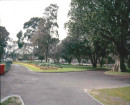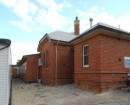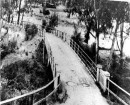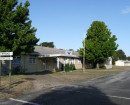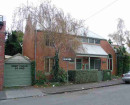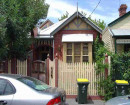HARWIN LODGE
930 Toorak Road CAMBERWELL, BOROONDARA CITY
-
Add to tour
You must log in to do that.
-
Share
-
Shortlist place
You must log in to do that.
- Download report



Statement of Significance
What is Significant?
The dwelling and setting of Harwin Lodge, 930 Toorak Rd, Camberwell is significant.
Built in 1920, Harwin Lodge is the earliest and most intact example of an interwar house executed in the Old-English domestic revival style.
How is it significant?
Harwin Lodge, Camberwell is of local historical, architectural and aesthetic significance to the City of Boroondara.
Why is it significant?
Harwin Lodge is of architectural and aesthetic significance as the most early and intact example of an English revival style residence within a garden setting. The dwelling embodies the principal characteristics of the style through its large asymmetrical massing and set of well executed detailing, some of which is not commonly seen on other examples. (Criteria D & E). The dwelling is a representative example of a revival style that was designed and constructed for its location, and for owners that had the means to adopt emerging styles and thus created a home that reflected their ideals. (Criterion D)
-
-
HARWIN LODGE - Physical Description 1
The dwelling at 930 Toorak Road is of a picturesque Old-English domestic revival style situated within its own grounds. The residence is set back in the site addressing the changing slope of the site away from the street. Located on the southern side of Toorak Road, the north facing dwelling is asymmetrically massed through a two-storey projecting gable that fronts the street. A single-storey section is located on the south, with a pavilion structure to the southwest corner of the house. The building features half timbering, exposed brick and rendered surfaces to combinations of half or whole facade surfaces.
The principal roof form comprises a large traverse gable with an intersecting gable to the north. A lower built form extends out to the west extension, repeating the gable form, and a single-storey lean-to extends out to the south. The roof is predominantly clad in Marseille terracotta tiles with rafter ends exposed. The pavilion structure has a corrugated metal roof with a southern facing gable. The transverse gable at the front features a cat slide roof over a stair hall, which unusually adopts a curved pitch rather than a straight form. Two brick chimneys are visible from the street, with a third servicing the former kitchen to the rear. The larger principal chimney on the east elevation features two flues and has simplified corbel detailing while the single flue rear two chimneys feature exposed brick to the roof line and are rendered below.
The walls are predominantly of clinker brick with various applications of half-timber detailing in the Tudor fashion, and unusual application of render to the recessive ground floor sections. The first-floor window on the northern wing and the oriel window to the east feature quatrefoil motifs. A variety of painted timber windows include sashes and casements and have clear diamond lead-lighted glazing. The long vertical window that sits under the cat slide roof contains a coat of arms motif with angled bands and a lower central circle.
A tall brick boundary wall separates the house from the street and there is a row of mature Cypress trees down the western boundary. A bricked driveway runs from the front gate down the eastern side of the house, with a curved alcove parallel to the street created at the front of the residence with pedestrian path to the entrance.
The rear garden is landscaped and includes an outdoor entertaining area, pool, carport and studio.
Heritage Study and Grading
Boroondara - Municipal-Wide Heritage Gap Study: Vol. 2 Camberwell
Author: Context
Year: 2018
Grading: Local
-
-
-
-
-
Avenel, later Tower House
 Boroondara City
Boroondara City -
Rathmore; Rokeby
 Boroondara City
Boroondara City -
Stratford
 Boroondara City
Boroondara City
-
"1890"
 Yarra City
Yarra City -
"AMF Officers" Shed
 Moorabool Shire
Moorabool Shire -
"AQUA PROFONDA" SIGN, FITZROY POOL
 Victorian Heritage Register H1687
Victorian Heritage Register H1687
-
-






